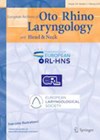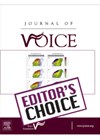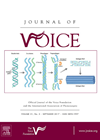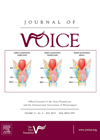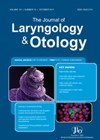
Journal Reviews
Hyaluronic acid injection laryngoplasty
This systematic review discusses the use of hyaluronic acid in injection laryngoplasties. Unilateral vocal cord paralysis leads to incomplete vocal fold adduction and dysphonia. For patients not improving with voice therapy, surgical procedures include injection laryngoplasty or open laryngeal framework...
Early injection laryngoplasty for iatrogenic vocal fold movement impairment – a safe and effective treatment
This Ed’s Choice examines the role of early injection laryngoplasty on swallowing dysfunction and is one of a few studies available in the literature. Research on early injection laryngoplasty has been predominately focused on voice and reducing the risk of...
A voice as smooth as silk?
A number of materials currently exist for vocal fold injection medialisation. Popular options include calcium hydroxylapatite (CaHA), hyaluronic acid (HA) and polydimethylsiloxane (PDMS). The authors of this paper state that there is an unmet need for an injectable material that...
Should we routinely perform steroid injections following microlaryngeal excision of benign lesions?
This retrospective cohort study assessed a single surgeon’s outcomes before and after the routine administration of intralesional triamcinolone following microsurgical removal of benign vocal fold lesions (polyps, nodules and cysts). A total of 211 patients were recruited for the study....
Long-term results of injection laryngoplasty with polydimethylsiloxane (Vox) for unilateral vocal fold paralysis
Polydimethylsiloxane (PDMS) is widely used for vocal cord injections to treat patients with a vocal cord palsy. It is commercially available as the Vox implant system. Alternative compounds that can be employed include hyaluronic acid and calcium hydroxyapatite (Radiesse Voice)....
Do intratympanic injections require local anaesthesia?
Intratympanic injections are becoming increasingly acceptable in the management of Meniere’s disease, tinnitus and sudden hearing loss. This is because they avoid the need for hospitalisation and can be performed as low-cost outpatient procedures. It is traditional to freeze the...
Lateral wall augmentation for patulous eustachian tube
The problem more commonly attributed to the eustachian tube is lack of its patency rather than it being unduly patulous. This lesser recognised condition is due to loss of peritubal fat volume resulting in concavity of the lateral wall and...

